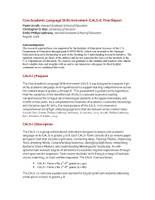JET Education Services Artificial Intelligence (AI) Chatbot is designed to provide information and assistance related to JET work and focus areas.
The chat bot is powered by ChatGPT 3.5, and, while every effort is made to ensure the accuracy of the information provided by the AI Chatbot, users should be aware that the responses generated are based on available data and algorithms linked directly to the JET resources and the About Us page.
Click here to get started
Some prompts you can try:
"Give me an overview of JET's involvement in NPO management in the last decade"
"Show me a summary of JET's 5 latest publications"
⚡ Powered by Scriv and Chat GPT
Important to note: ChatGPT can make mistakes.
Consider checking important information. Please note that these answers are not verified by JET, so please use your discretion when sharing them.
Disclaimer: JET Education Services cannot guarantee the accuracy, completeness, or timeliness of the information provided. Users should be aware that the AI Chatbot may experience technical issues or interruptions in service. By using this Chatbot, users acknowledge and agree to the terms outlined in this disclaimer.
For further enquiries, users can contact JET Education Services or view our Frequently Asked Questions here.

![]() Uccelli_2016_IES_CALS_Report.pdf
— 677.1 KB
Uccelli_2016_IES_CALS_Report.pdf
— 677.1 KB